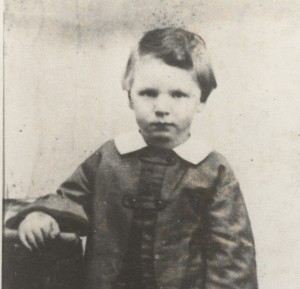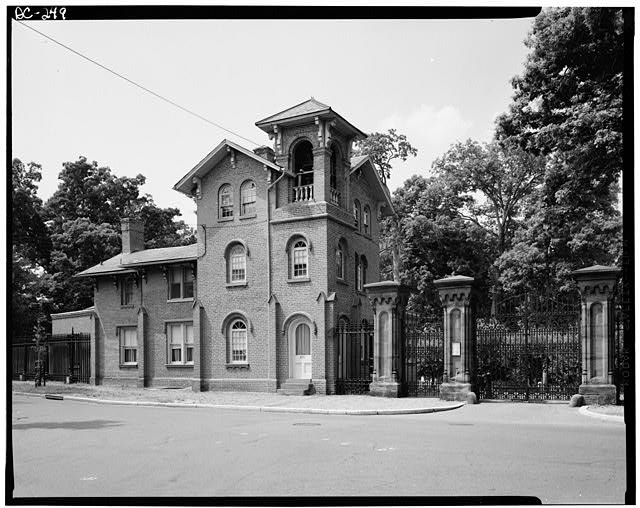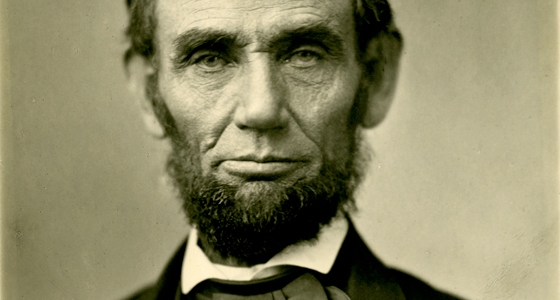George Saunders’ recent Lincoln in the Bardo is the most interesting thing I’ll read all year. Saunders’ career is built on finding the small, the unlovable people of the world and constructing a story around them purpose-built to carve a them-sized cavity in your heart, to demonstrate forcefully why they, yes, even they, are deserving of love, or at least pity. His writing is very Sermon-on-the-Mount, and encourages us to have empathy for the unfortunate and understanding for the contemptible. Saunders’ career is also built on short stories, and it’s exciting to get a novel out of him. As you might expect from someone who started his career as a geophysical engineer, it strays far from novelistic conventions. So what exactly is it?
In my outline for this part, the first bullet point was “Hoo boy.” Where even to start? I guess with an explanation of what “Lincoln,” “in” and “the Bardo” mean. The bardo is a state of spiritual transition in Tibetan Buddhism. After death, those freshly severed from their bodies linger in a liminal state, awaiting the start of their next life. The one and only setting of the book is Oak Hill Cemetery, where young Willie Lincoln lingers, awaiting his father. He died young from a fever just as the Civil War was really ramping up. The book also features the leader of the sundered Union, Abraham himself, who repeatedly visits his boy’s corpse, unable to move on, just like his recently deceased son.

Willie is not alone in the bardo. Oak Hill Cemetery is filled with the archetypes of all the feckless people Saunders tends to write about. In fact, the book is mostly about them. There’s the old man who married a young bride, but died just before consummation. There’s the gay man who slit his wrists and, just as the percussion of blood on porcelain hit his ears, changed his mind. There’s the drunken misfit couple, who passed out in the road and were run over by the same carriage. In the finest traditions of human cognitive dissonance, they are constitutionally incapable of realizing they are dead. They believe they’re simply resting, like the Norwegian Blue (beautiful plumage, innit?). One ghost, obliviously describing his death, says:
There I lay, in my sick-box, feeling foolish, in the parlor…[t]hen the physician returned, and his assistants carried my sick-box to his sick-cart, and I saw that — I saw that our plan must be indefinitely delayed.
Beautiful piece of dramatic irony, as it’s entirely clear what that sick-box is, what that physician is doing, and where that sick-cart is going. The bardo/cemetery plane is semi-sentient, and takes a dim view of lingerers. It’s not outright malevolent, but it is definitely the extreme opposite of amenable to these people. Its job is to attack, to weaken, and to entice. Its methods of enticement are varied, bizarre, and vivid, and I’ll leave it entirely to you to find out what they are by reading the book.
Saunders’ background and his expertise are short stories — perfect capsules of narrative that achieve quickly and efficiently what they’re built to do. Saunders doesn’t so much write a novel here as use his absolute mastery of the short story form to compose fragmentary, ultra-short narratives then fit them back together in a way that works. Saunders is like a self-taught glassblower who never learned how to build a vase in the standard way, in a single piece. He instead starts with 160 colorful shards of glass and fits them together in a way that not only holds water, but is strikingly beautiful and original. That’s how many separate voices are in this book, by the way. Saunders writes 160 different people in a 367 page book. Some are only there for a page or paragraph, some recur, but they are all there and all distinct.
The distinctness of each voice is a triumph. Saunders’ authorial voice disappears completely into each character. He peeks out here and there, certainly, but for the most part, these impressively distinct characters arise from their impressively distinct language. Some examples:
A Union army captain, first coming to the bardo:
Wife of my heart laura laura
I take up my pen in a state of such great exhaustion that only my deep love for all of you could so compel me after a day of such Unholy slaughter and fear. And must tel you frankly that Tom Gilman did not make it through that terrible fite. Our position being located in a copse. Much firing during which I heard a cry. Tom is hit & fallen. Our Brave & Noble frend laying upon his Face upon the Ground. I directed the Boys that we would avenge even if it meant stepping through the very gates of Hell.
captain william prince
One of the more permanent inhabitants, judging the preceding captain for realizing where he is and leaving:
My goodness, I thought, poor fellow! You did not give this place a proper chance, but fled it recklessly, leaving behind forever the beautiful things of this world.
And for what?
You do not know.
A most unintelligent wager.
…
roger bevins iii
A ghost regretting his choices:
I give her dimonds and perls and broke the harts of wife and children and sell the house from under us to buy more dimonds and perls but she thows me over for mr hollyfen with his big yellow laughing horseteeth and huge preceding paunch?
robert g. twistings
Someone who doesn’t know how to talk without inflating each and every word:
I did always try, in all my aspects, to hew to elevation; to dispense therewith, into myself, those higher virtues of which, rendered without, one verily may sag, and, dwelling there in one’s misfortune, what avails.
elson farwell
A good reverend, trying to convince Willie Lincoln to leave:
What do you think? I said to the boy. Is this a good place? A healthy place? Do these people seem sane to you, and worthy of emulation?
the reverend everly thomas
Five different mini-narratives present five completely different voices, and Saunders does this 160 times. The constantly swirling perspectives, shifting not just in subject, and not just superficially in style, but presenting a new world with every speaker, is the center of what makes this book work.
Saunders expertly places each shard of narrative, expanding here, shortening there, revisiting, interweaving, and building a miraculous whole. Out of the chaos of each ghost’s small, painful grievance he constructs a cohesive picture of the shared experience of humanity.
Saunders also pulls off this maneuver with quotations from history. There are alternate chapters composed entirely of historical quotations, with Saunders mixing and matching dozens of sources and making them serve the narrative. One of the bardo chapters ends with the ghosts seeing Abraham Lincoln’s face, and the next chapter consists entirely of historical sources describing Lincoln:
The pictures we see of him only half represent him.
— Shenk, op. cit., account of Orlando B. Ficklin.
In repose, it was the saddest face I ever knew. There were days when I could scarcely look at it without crying.
— Carpenter, op. cit.
But when he smiled or laughed…
— Ostendorf, op. cit., account of James Miner.
It brightened, like a lit lantern, when animated.
— In “Lincoln the Man,” by Donn Piatt, account of a journalist.
The impressive thing here isn’t so much Saunders’ ability to quote extensively and fluently from historical sources, but how he can join them together seamlessly to serve his purpose. Without the citations breaking them up, these four disparate quotations flow almost exactly as a fictional paragraph, and Saunders pulls this trick repeatedly. There’s a caveat though: some of these historical citations (not anywhere near the majority, just here and there) are made from whole cloth. In some cases they read with the cadence of fiction because they are. Also, this guy is so good at style that it took me half the book to notice the counterfeit.
The story arc is the movement from anxiety and fixation to enlightenment and acceptance for both the living and the dead. Lincoln needs to come to terms with his grief, leave his boy in his “sick-box,” and go lead a nation at war. Each ghost needs to come to terms with its own death and go on to its next life. For Lincoln, the fixation is the overwhelming, intolerable depth of loss. For each of the other 159 characters in the book, the fixations vary, but what is common is that it forces out all other aspects of their personality. The boneyard is filled with anxiety-ridden neurotics whose fixations influence their physical appearance. The man who committed suicide and deeply regrets removing himself from the sensory feast of life walks around with multiple hands, noses, eyes, etc., sprouting more and more whenever he gets excited; the man who was denied connubial bliss walks around naked with a member swollen to the size of, well, I gather it’s impressive, but you can never really tell as the only people who talk about it are rather repressed 19th century Americans. Let’s just say it appears to impede locomotion.

They are trapped physically (ectoplasmically?) and spiritually by these fixations, and only by making peace with them and opening themselves up to the wider experience of the universe can they move on. When they accept their own death, they pop out of existence with “the familiar, yet always bone-chilling, firesound associated with the matterlightblooming phenomenon,” a phenomenon which terrifies those left behind. Simultaneously, Lincoln can only move on to become one of the greatest leaders of history by dealing with his loss. The living and the dead in this book must learn acceptance.
George Saunders has described literature as a “compassion-generating machine,” and he’s built a compassion-generating nuclear reactor here. As each character progresses from misery to acceptance, as their major failings are detailed, the author understands them so deeply that, at the end of their journey, admirable or cruel, enlightened or still trapped, you can’t help but love them, and by extension, love the entire human race. Saunders taps into the powerful national narrative of Lincoln-the-leader, explores his deep struggle with his son’s death, and uses that strong current to help turn the emotional millwheels for an extensive cast of screw-ups, each mini-narrative joined perfectly to the others, mutually supporting and building upon themselves and upon historical snippets, in the clear, inventive style of a master. Lincoln in the Bardo‘s clarity, weirdness, and emotional depth combine flawlessly to make it the best book of the year. Calling it now.
